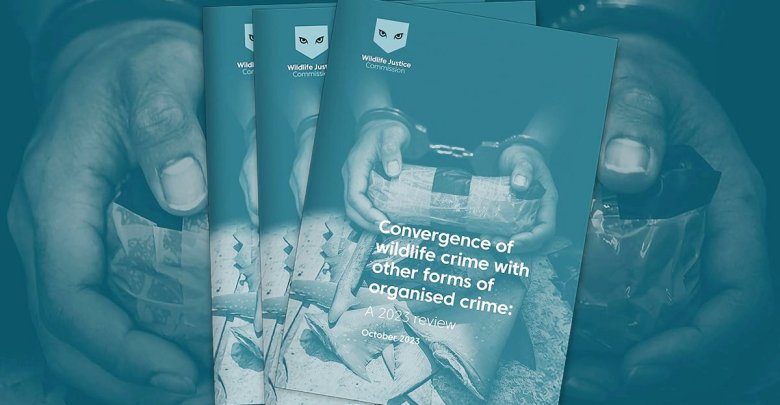On Monday, the Wildlife Justice Commission published a new report on the convergence of wildlife crime with other forms of organised crime: Convergence of wildlife crime with other forms of organised crime: A 2023 Review.
As wildlife trafficking has grown to become a more serious and profitable crime type during the past two decades, there is also mounting evidence of the increased involvement of organised crime networks and cases where wildlife crime is committed in conjunction with other forms of serious and organised crime.
The aim of this new report is to shed light on crime convergence through the identification of convergence typologies and strategies that assist law enforcement and policy makers to address these forms of transnational organised crime.
The report builds on the Wildlife Justice Commission’s first crime convergence report, published in 2021, which analysed a set of 12 case studies, and illustrated the varied ways that wildlife crime can overlap or intersect with other serious and organised crimes. It revisits the issue and presents additional analysis and insights from three in-depth case studies, based on open-source research and intelligence collected during Wildlife Justice Commission investigations. These three case studies add to the knowledge base on this issue, which will continue to develop globally as more cases are detected and analysed.
“Wildlife crime is a cross-cutting criminal activity which cannot be tackled in isolation from other crimes. Crime convergence should be further studied and integrated as part of the approach to tackle wildlife crime and organised crime more broadly. An improved understanding of this intersection can help to identify more strategic policy and law enforcement responses to address it.” said Olivia Swaak-Goldman, Executive Director of the Wildlife Justice Commission.
The first case study represents a diversification of commodities involving elephant ivory, pangolin scales, illegal sand mining, and protection rackets in Southeast Asia and Africa. The second case study illustrates an embedded convergence between rhino poaching, corruption, and money laundering in Africa. The third case study suggests a transactional convergence between seafood businesses and drug trafficking networks and an embedded convergence involving shark, sea cucumber, illicit drugs, tax evasion, money laundering, and corruption in Central America.




